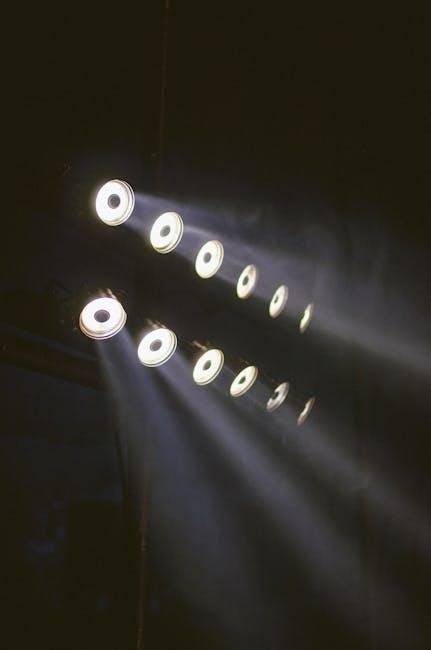In the ever-evolving landscape of cinema, where pixels often paint the most vivid scenes, a quiet debate simmers beneath the surface. As audiences are dazzled by the latest high-tech visual effects, a question emerges from the shadows: Does this digital dazzle dim the light on traditional filmmaking skills? In this exploration, we delve into the heart of filmmaking, where time-honored techniques meet cutting-edge technology. We aim to unravel whether the allure of CGI and digital wizardry eclipses the artistry of classic storytelling, or if it simply adds another brush to the filmmaker’s palette. Join us as we navigate this cinematic crossroads, seeking balance between innovation and tradition.
Balancing Spectacle and Storytelling: A Cinematic Dilemma
In the age of digital cinema, filmmakers are often faced with the challenge of integrating cutting-edge technology with compelling narratives. High-tech visual effects have the power to transport audiences to breathtaking worlds, yet they risk overshadowing the core elements that make a story memorable. The delicate dance between spectacle and substance raises critical questions:
- Are the emotional arcs of characters being sacrificed for the sake of visual grandeur?
- Is there a diminishing emphasis on scriptwriting and character development?
- How can directors ensure that visual effects enhance rather than detract from the storytelling experience?
Traditional filmmaking skills—such as nuanced acting, meticulous set design, and thoughtful pacing—remain essential to crafting a story that resonates. As filmmakers navigate this evolving landscape, they must strive to find a harmonious balance, ensuring that the heart of the narrative beats just as strongly as the visual spectacle captivates the eye.

Rediscovering the Craft: Skills Beyond the Screen
In the era of CGI and digital wizardry, the heartbeat of traditional filmmaking often finds itself overshadowed. Yet, the artistry of practical effects, set design, and in-camera techniques remains irreplaceable. These skills, honed over decades, offer a tangible authenticity that can elevate storytelling to new heights. While digital effects can create worlds beyond imagination, the tactile nature of traditional methods provides a sense of realism that audiences can feel, not just see.
Embracing these skills involves more than nostalgia; it’s about preserving the essence of cinema. Consider the intricate craftsmanship involved in:
- Miniature models that offer a depth of field difficult to replicate digitally.
- Animatronics that breathe life into characters, fostering genuine interactions on set.
- Practical lighting that creates mood and atmosphere without post-production tweaks.
Balancing high-tech advancements with these foundational techniques not only enriches the filmmaking process but also ensures a diverse and vibrant cinematic future.

Harmonizing Innovation and Tradition in Filmmaking
In the evolving landscape of cinema, the integration of cutting-edge visual effects has sparked a conversation about the potential erosion of foundational filmmaking techniques. Innovative technology offers filmmakers a palette of possibilities, allowing them to craft immersive worlds and stunning spectacles that were once confined to the realm of imagination. However, this technological embrace sometimes overshadows the artistry of traditional skills that have defined cinema for decades.
The balance between these two realms is crucial. On one hand, high-tech visual effects provide:
- Unprecedented storytelling opportunities
- The ability to create visually complex narratives
- Enhanced audience engagement through spectacular visuals
Conversely, the essence of traditional filmmaking lies in:
- Mastery of cinematography and lighting
- Nuanced performances and character development
- The subtle art of editing and sound design
Ultimately, the challenge for modern filmmakers is to harmonize these elements, ensuring that technology complements rather than eclipses the timeless skills that have long defined the art form.

Crafting a Unified Vision: Recommendations for Filmmakers
In the quest for a balanced approach to filmmaking, it is crucial to blend the allure of modern visual effects with the essence of traditional storytelling. Here are some recommendations to help filmmakers craft a unified vision:
- Embrace Collaboration: Foster a dynamic partnership between VFX artists and traditional filmmakers to create a seamless integration of technology and narrative.
- Prioritize Storytelling: Ensure that visual effects serve the story rather than overshadow it. A compelling narrative remains the heart of any great film.
- Invest in Skill Development: Encourage continuous learning and adaptation, blending old-school techniques with cutting-edge technology to enhance creativity.
- Balance Innovation with Tradition: Use technological advancements to elevate classic filmmaking skills, not replace them. Strive for harmony between the two.
By focusing on these elements, filmmakers can create works that are not only visually stunning but also rich in depth and storytelling.

